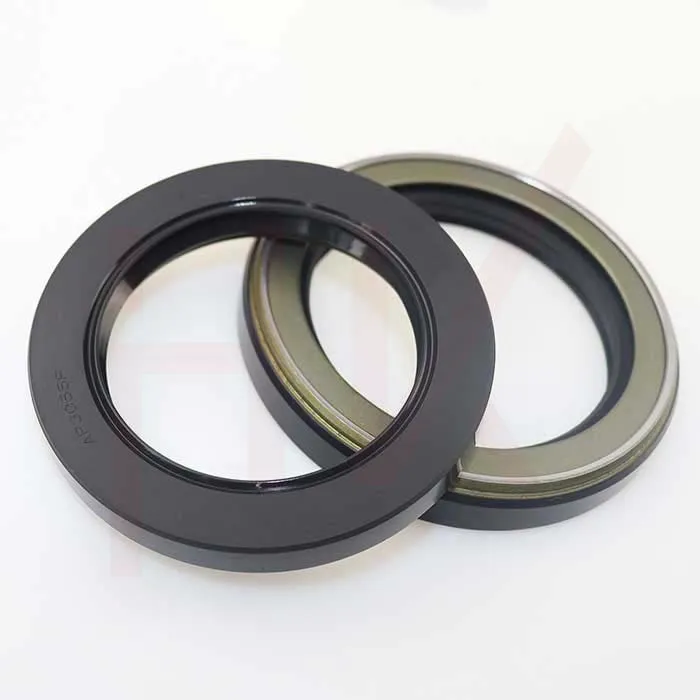ನವೆಂ . 07, 2024 16:55 Back to list
Shaft Seals for Effective Wiper Performance in Machinery
Understanding Shaft Wiper Seals An Essential Component in Machinery
Shaft wiper seals are critical components in many mechanical applications, playing a key role in maintaining the integrity and efficiency of machinery. These seals are designed to prevent contaminants from entering the interior of rotating shafts while also protecting the shaft from potential damage caused by external debris. In this article, we will explore the importance of shaft wiper seals, their types, applications, and maintenance considerations.
The Role of Shaft Wiper Seals
Shaft wiper seals are typically installed at the ends of a rotating shaft, often found in hydraulic cylinders, conveyors, and various industrial machinery. Their primary function is to keep dust, dirt, and moisture out of the shaft assembly. By sealing off the shaft, wiper seals enhance the longevity of mechanical parts, reduce wear and tear, and ensure that the machinery operates at its best.
Contaminants can have detrimental effects on machinery performance. They can lead to increased friction, overheating, and ultimately, machine failure. By effectively keeping harmful substances at bay, shaft wiper seals help to prolong the lifespan of the equipment and reduce maintenance costs.
Types of Shaft Wiper Seals
There are several types of shaft wiper seals, each designed for specific applications and environments. Some of the most common types include
1. U-Cup Seals These seals have a U-shaped cross-section and are widely used due to their simple design and effectiveness in sealing against dirt and moisture. U-cup seals are particularly suited for low-pressure applications.
2. V-Ring Seals V-ring seals are made from flexible materials and offer a reliable sealing solution for rotating shafts. They provide excellent resistance to dirt ingress and can accommodate axial movement, making them ideal for applications where shafts may shift position.
3. Scraper Seals Designed specifically for heavy-duty applications, scraper seals are robust and effective in preventing larger particles from damaging the shaft. They are commonly used in industrial machinery where exposure to abrasive materials is prevalent.
shaft wiper seal

4. Rotary Seals Also known as oil seals, these are used to retain lubricant and prevent leakage while keeping dirt out. Rotary seals are crucial in applications involving high-speed rotation and high pressures.
Applications of Shaft Wiper Seals
Shaft wiper seals are utilized in various sectors, including manufacturing, automotive, aerospace, and agriculture. For instance, in hydraulic systems, shaft wiper seals protect the cylinder from external contaminants that could compromise the performance of hydraulic fluids. In agricultural machinery, these seals play a significant role in protecting equipment from dirt and moisture, which are common in outdoor environments.
Additionally, in the automotive sector, shaft wiper seals are found in power steering systems, transmissions, and wheel hubs, helping to maintain the efficiency of these vital components. Their versatility and effectiveness make them indispensable in many machines, adding to their widespread use across different industries.
Maintenance Considerations
Regular inspection and maintenance of shaft wiper seals are essential for optimal performance. Signs of wear may include cracks, deformation, or loss of elasticity. If a seal is compromised, it is crucial to replace it promptly to avoid extensive damage to the machinery. Operators should also ensure that the installation of these seals is done correctly, as misalignment or improper fitting can lead to seal failure.
Moreover, choosing the right material for shaft wiper seals is crucial. Materials such as rubber, polyurethane, or silicone are often chosen based on the specific operating environment, temperature ranges, and chemical exposure. In applications with harsh conditions, specialized materials may be necessary to enhance their durability and performance.
Conclusion
In conclusion, shaft wiper seals are fundamental components in many industrial applications, serving to protect shafts from contaminants while ensuring efficient operation. Understanding their types, applications, and maintenance needs is essential for all industries that rely on complex machinery. By investing in high-quality seals and adhering to proper maintenance practices, businesses can enhance the lifespan of their equipment, improve operational efficiency, and reduce downtime.
-
TCN Oil Seal Metal Ring Reinforcement for Heavy Machinery
NewsJul.25,2025
-
Rotary Lip Seal Spring-Loaded Design for High-Speed Applications
NewsJul.25,2025
-
Hydraulic Cylinder Seals Polyurethane Material for High-Impact Jobs
NewsJul.25,2025
-
High Pressure Oil Seal Polyurethane Coating Wear Resistance
NewsJul.25,2025
-
Dust Proof Seal Double Lip Design for Construction Equipment
NewsJul.25,2025
-
Hub Seal Polyurethane Wear Resistance in Agricultural Vehicles
NewsJul.25,2025
-
The Trans-formative Journey of Wheel Hub Oil Seals
NewsJun.06,2025
Products categories
















